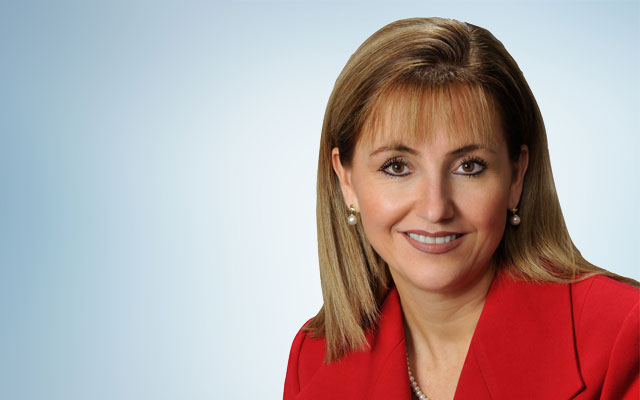As the first woman to helm WTTC, Gloria Guevara Manzo is aiming to smash the glass ceiling for women in travel, aside from confronting tourism’s other pressing issues.
How are you different from David Scowsill (former president & CEO of WTTC) – apart from gender of course?
David was successful in (getting travel & tourism) to speak in one voice, and in his partnership with the UNWTO. My job is to build on the foundation he has created. It’s like building a house; he was responsible for building the foundation and now I’m building the next floor. David also did a good job with the team – look at the expertise we have now.

I had interactions with WTTC (Editor’s Note: As Mexico’s tourism secretary, she worked with WTTC to get G20 world leaders to include travel & tourism on their agenda. This was in 2012, when Mexico hosted their annual meeting). I have to say WTTC is different today from seven years ago. It now has higher visibility. A lot of progress has been made, and it is the authority in representing the private sector. Now I see some challenges in some countries but also several opportunities.
I supposed advancing women’s role in travel & tourism is one challenge?
I’m always supportive of women. I was invited to speak at the Women’s Forum for the Economy and Society Global Meeting 2017 last October in Paris (Editor’s Note: The society says it is the world’s leading platform featuring women’s voices on major social and economic issues) and I was happy to represent the travel & tourism private sector there. Fifty per cent of jobs in travel & tourism worldwide are already steered by women; our objective is, how do we support women to move up the ranks in the industry?
The travel & tourism private sector is ahead of the game in this. I am the best example; WTTC appointed a woman for the first time to lead the organisation. We have to give credit to our members, the CEOs of the travel & tourism private sector, the majority of whom are men, and they chose a woman to lead the group. You don’t see that in many other industries.
What’s your proudest achievement as Mexico’s tourism secretary, prior to joining WTTC as president & CEO?
I have two. The first is when I was invited by (former Mexico) president Felipe Calderón to combat a declining travel & tourism industry in Mexico. We had lost four million travellers in a short time frame because of the perfect storm of H1N1 (pandemic which started in 2009), security issues and the US financial crisis.
Thinking as a private sector player (she was with Sabre Holdings before her post as Mexico’s tourism secretary), the first thing you do is create a business plan, engage everyone, and that’s what I did. We created what was called the ‘national agreement’ that set the foundation the country needed to turn around the situation. We were able to stop the decline, turned it around since the year we implemented it, and Mexico (tourism) has been growing and breaking records every year. I’m proud of my little bit of contribution, that I was able to help a lot of people. Our decisions impact millions of people whom we don’t even know. That’s really nice.
The other was when I hosted the G20 and, for the first time ever, travel & tourism was included in the G20 Leaders Declaration. That has not been repeated. We are going to try to include that in Buenos Aires (G20 summit this year), hopefully the (Buenos Aires tourism) minister is able to make it happen; he will have my full support.
Why did you choose to cross over to the tourism private sector from government?
I love this industry. My degree is in computer science, but my passion is travel. I always think of how to apply my knowledge and expertise to the benefit of the industry.
Going back to the challenges and opportunities that you now see, what are the priorities?
Before, we talked more about travel facilitation. Now the big concern is security. We need to engage governments on how, we as the private sector, help to increase security, while at the same time increase the number of travellers so more jobs can be created.
I believe I have a good understanding on how governments think, and we’re going to engage governments more on these discussions and partner with them as we both have a common agenda on travel facilitation and increased security.
That’s linked to the issue of increased protectionism which we saw a lot of last year.
Yes. While we want more visas or more flexible systems to allow for increased travel & tourism, I can also understand governments’ concerns about their citizens. But there are technologies that can be used, and the private sector has an important role in working those technologies. The issue is finding a common standard.
You remember the transition from manual to e-ticketing? That was a standard from the private sector. IATA was responsible for that roll-out, and it became a standard with airlines, travel agents, GDSs, pretty much everyone. It was painful at the beginning, but a great resource in the end, as it allowed for more seamless travel.
What if we do something similar with standards for safety and security, to make the travel experience seamless for the passenger?
Any example?
For example, in biometrics, your face is your ID. Won’t it be great if we can translate that face into a code and that code goes into your PNR. The travel agency transfers that, along with everything it transfers today, to the airline, hotel, cruise company and so on. So whenever I’m travelling internationally, the airline transfers that to the authorities, and immigration already has my unique code. Wouldn’t be wonderful when I arrive at the airport and my face is my ID? So they use my face to get through immigration, security, boarding, check in at hotel, car rental, cruise – the entire chain uses the same standard. That’s my vision. Is that the solution? If I think as a former government officer, absolutely: I know who’s going to arrive in my country, I already have the information, so you are being considered for who you are and not where you are from. So governments can spend most of their time on the five per cent, not the 95 per cent trusted travellers who should be able to travel seamlessly.
We need to look at the technology and involve the experts. We have started the conversations but we need to engage all the right players and define the next steps. A lot of work has already been done, it’s a matter of taking this to the next level.
You also believe that governments should engage the private sector early on in crisis management, and in sustainable tourism development, which is linked to the tourism overcrowding issue we’ve also seen of late.
With regard to tourism overcrowding, we’ve launched a study about it with McKinsey (last month). The idea is we want to work with local governments to build the path for putting the right planning in place, having the right flows of people, engaging the local citizens. We need to put into context that tourism brings lots of benefits, but we understand the concerns of local citizens as well. That’s why the report, for example, shares the best practices of cities that are doing wonderful jobs in managing volumes.
We’re also monitoring the best public policies and what I’d like to do is point them out and celebrate them this year in April (WTTC Global Summit) in Buenos Aires as a way to encourage governments to have sustainable planning, public policy and regulations.
Your recent study shows the world’s top 10 fastest-growing tourism cities are all in Asia. Isn’t the region the place to preach the dangers of overtourism?
Right now, Europe is the largest travel & tourism region. If Asia continues with this growth, it will be number one in the world. The question is, what are these cities doing to plan for growth, and to capture their fair share and maximise the opportunity? Hopefully this study, and our other efforts, will help them in their decision-making and planning.
Last question, what to do with Mr Trump who talked about building a wall between the US and Mexico?
He sent so many messages, but he hasn’t really changed anything – take the visas for instance. My job is to represent the private sector and we will continue to support the US to create more jobs.




















